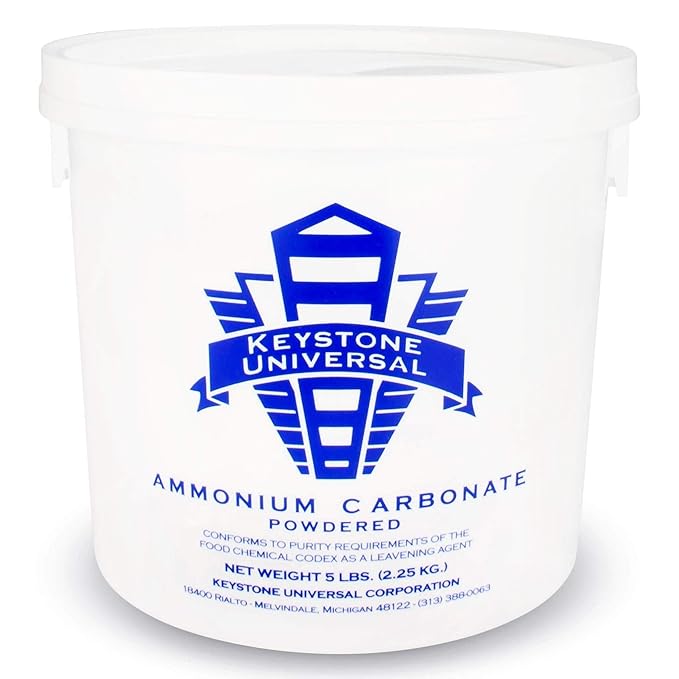What is Ammonium Bicarbonate?
Ammonium bicarbonate, with the chemical formula NH₄HCO₃, is a white compound that can appear as a granular, plate-like, or columnar crystal with a characteristic ammonia odor. Being a carbonate, it must be kept away from acids, as acid will react with ammonium bicarbonate to produce carbon dioxide, which can cause the compound to deteriorate.
Uses of Ammonium Bicarbonate
- Agriculture: It is used as a nitrogen fertilizer suitable for various soils, providing both ammonium nitrogen and carbon dioxide necessary for crop growth. However, it has a low nitrogen content and is prone to caking.
- Chemical Reagent: It is used as an analytical reagent and is also involved in synthesizing ammonium salts and degreasing fabrics.
- Crop Growth: It promotes crop growth and photosynthesis, encouraging leaf development. It can be used as top dressing or base fertilizer and also functions as a food leavening agent.
- Food Industry: Ammonium bicarbonate serves as a high-quality food leavening agent. Combined with sodium bicarbonate, it can be used to produce bread, biscuits, pancakes, and foaming powdered juices. Additionally, it is used to blanch green vegetables and bamboo shoots and finds applications in pharmaceuticals and reagents.
- Buffer and Aeration Agent: It functions as a buffer and an aeration agent in various industrial processes.
- Industry: Ammonium bicarbonate is widely used in plastics, rubber manufacturing, pottery, chrome tanning, and as a synthetic catalyst.
Is Ammonium Bicarbonate as a Food Additive Harmful?
No, ammonium bicarbonate as a food additive is not harmful. It is commonly used as a leavening agent in food products. When heated, it decomposes into ammonia gas and carbon dioxide, both of which volatilize, leaving no harmful residue in the food. It is frequently combined with sodium bicarbonate to create leavening agents used in bread, biscuits, pancakes, and powdered juice.
Storage of Ammonium Bicarbonate
- Store in a sealed container in a cool, dry, well-ventilated warehouse. Do not store it with NaOH or Ca(OH)₂.
- Ensure it is kept moisture-proof, rainproof, and sunproof during storage and transportation. Handle with care to avoid damaging the packaging.
- It must not be stored or transported with oxidizers, acids, or edible chemicals. During transportation, protect it from sunlight, rain, and high temperatures.
- In case of a fire, extinguish it using water spray, dry powder, carbon dioxide, or foam extinguishers.
Precautions When Using Ammonium Bicarbonate
- Avoid Foliar Spraying: Ammonium bicarbonate is corrosive to plant leaves and can cause leaf burn. It should not be used for foliar spraying on crops.
- Avoid Dry Soil Application: On dry soil, the fertilizer cannot dissolve and be absorbed by crops, making it ineffective.
- Avoid High-Temperature Application: The volatility of ammonium bicarbonate increases with temperature, leading to a loss of fertilizer efficiency.
- Do Not Mix with Alkaline Fertilizers: Mixing ammonium bicarbonate with alkaline substances like lime or plant ash will result in nitrogen loss and reduced fertilizer efficiency.
- Avoid Mixing with Bacterial Fertilizers: Ammonium bicarbonate releases ammonia gas, which can reduce the effectiveness of bacterial fertilizers.
- Do Not Mix with Calcium Superphosphate Overnight: While mixing with calcium superphosphate can be beneficial, the mixture should not be stored for long periods or overnight, as it can turn into a slurry or form lumps.
- Avoid Mixing with Urea: Urea must be converted to ammonium nitrogen for crop absorption. Mixing it with ammonium bicarbonate accelerates nitrogen loss, reducing its effectiveness.
- Do Not Mix with Pesticides: Ammonium bicarbonate and pesticides are easily hydrolyzed by moisture, and their interaction can reduce the effectiveness of both.
- Avoid Use as a Seed Fertilizer: Ammonium bicarbonate is highly corrosive. Its ammonia gas can damage seeds, hindering germination and emergence.
- Apply Below the Surface: When used as a base fertilizer, it should be applied 7-10 cm below the soil surface. For paddy fields, plough and harrow to ensure the fertilizer is properly absorbed into the soil.

